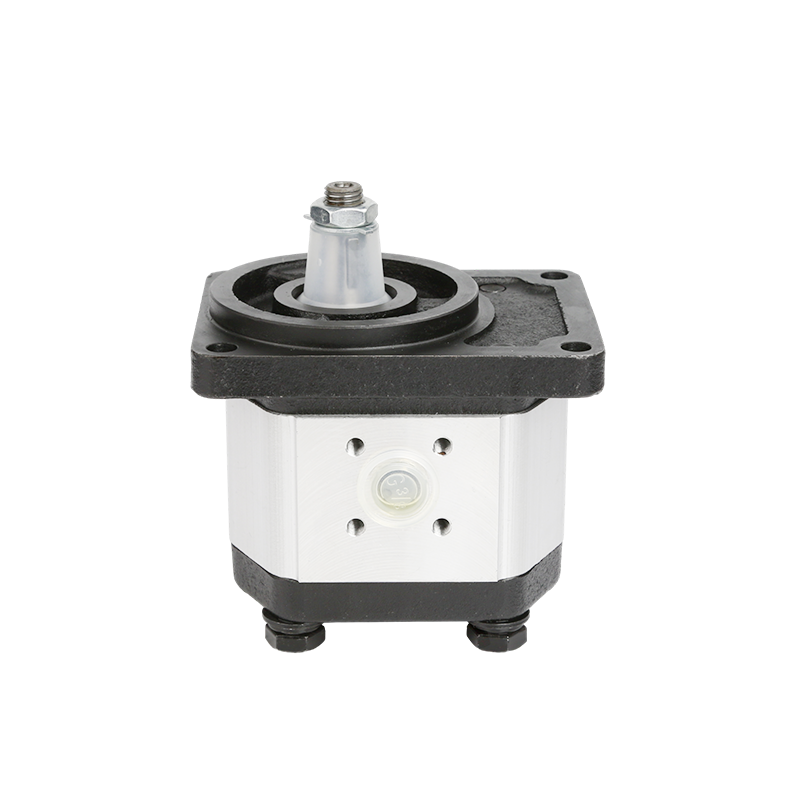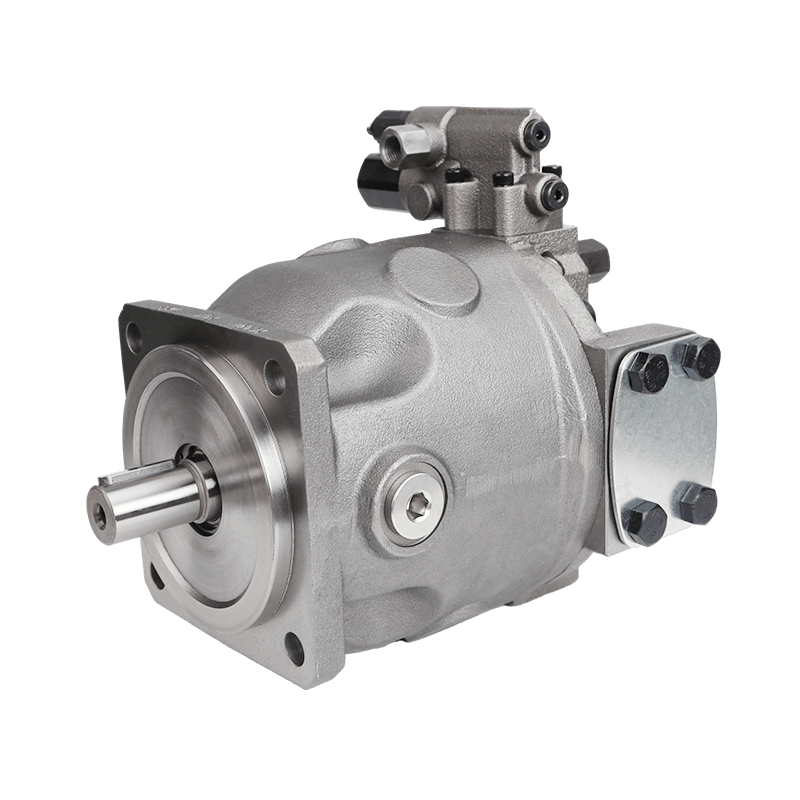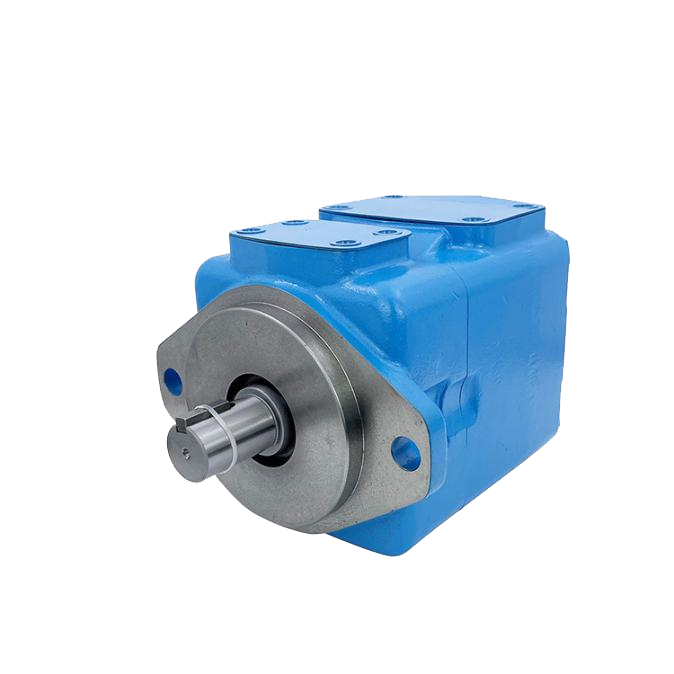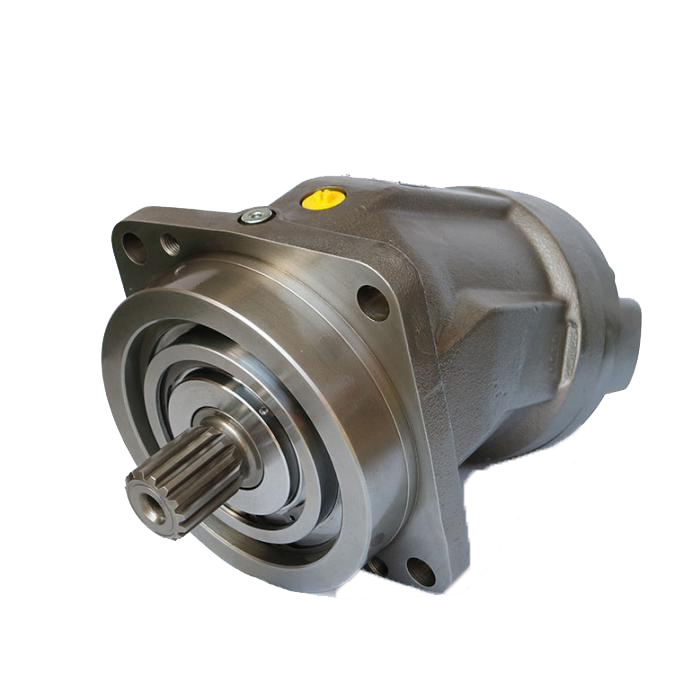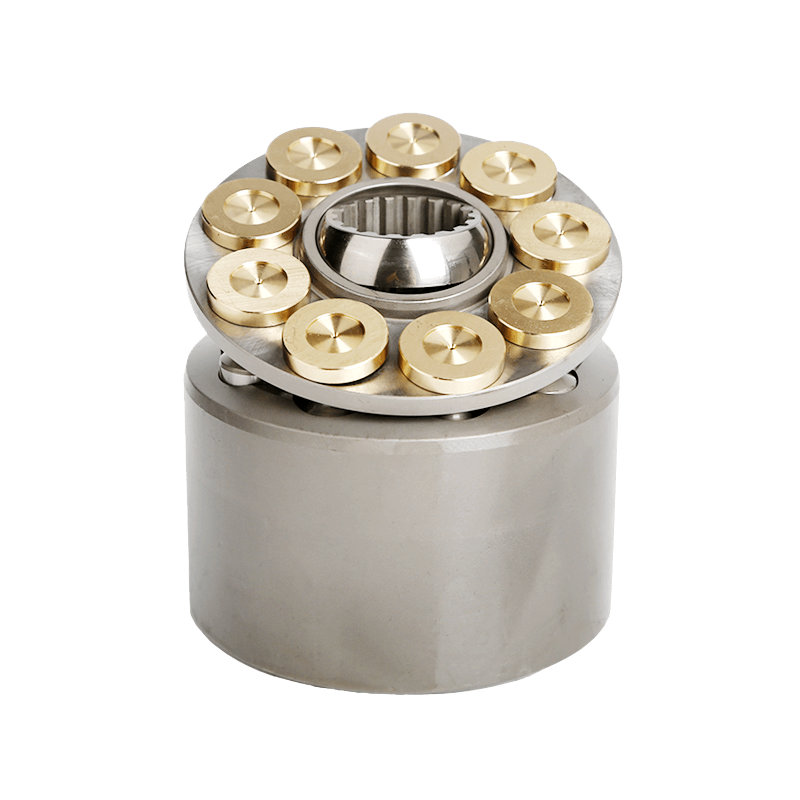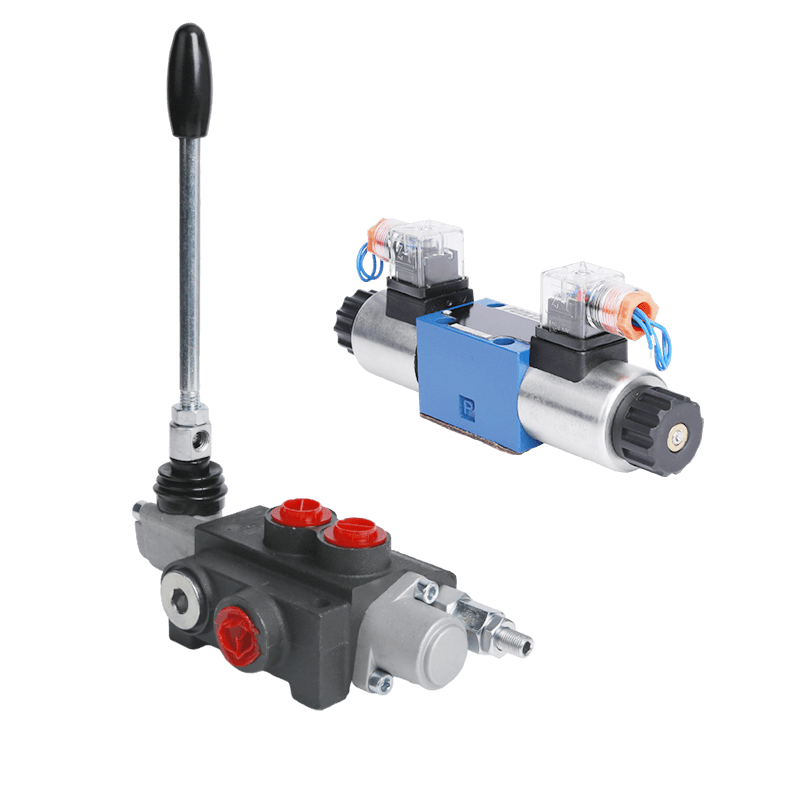Understanding Gear Pumps
Definition and Working Principle
Gear pumps are a type of positive displacement pump that are specifically designed to transfer fluids by using gears. These pumps operate by trapping a specific volume of the fluid between the teeth of two or more gears. As the gears rotate, the fluid is moved from the pump’s inlet to its outlet, creating a consistent and regulated flow. The simplicity of their design makes gear pumps reliable and efficient, often employed in various industries such as automotive, chemical, and manufacturing for their dependable performance and durability.
Types of Gear Pumps
Understanding the different types of gear pumps is crucial for selecting the right one for a given application, and ensuring that it operates efficiently and effectively.
External Gear Pumps
External gear pumps use two identical gears—both are typically the same size and rotate against each other within a casing. One gear is the driver while the other is driven. These pumps are characterized by their high-pressure capabilities and precision in fluid delivery. The teeth of the gears interlock perfectly, forming tightly sealed chambers that ensure minimal fluid leakage and high efficiency. External gear pumps are commonly used in applications requiring precise fluid control, such as in hydraulic systems or fuel injection systems.
Internal Gear Pumps
Internal gear pumps consist of two gears: the internal gear and the external gear. The internal gear (a smaller gear) meshes with the external gear (a larger gear), and both are offset within a casing. This configuration allows for more compact designs and smoother fluid flow. Internal gear pumps are especially suitable for handling high-viscosity fluids and are often preferred in applications involving heavy oils, adhesives, and other thick substances. Their versatile design provides consistent performance even under varying operational conditions.
Importance of Lubrication in Gear Pumps
Lubrication plays a critical role in ensuring the longevity and efficiency of gear pumps. Without proper lubrication, the mechanical components within the pump would suffer from increased wear and tear, leading to potential failures and costly downtime.
Role of Lubricants
Understanding the role of lubricants in gear pumps is essential for maintaining optimal performance and extending the equipment’s lifespan.
Reduction of Friction and Wear
Lubricants serve as a protective barrier between the metallic surfaces of the gears, reducing direct contact and minimizing friction. This significantly decreases wear and tear on the gears, extending their operational life. Consistent reduction in friction ensures that the gear pump runs smoothly, contributing to efficient fluid transfer and maintaining the quality of the pumped fluid.
Heat Dissipation
During operation, gear pumps can generate considerable amounts of heat due to the continuous meshing and unmeshing of gears. Lubricants help dissipate this heat, preventing overheating and potential damage to the gears and other internal components. By maintaining a stable temperature, lubricants ensure that the gear pump operates within its intended performance parameters, thus avoiding thermal-related failures and maintaining consistent output.
Types of Lubricants Used in Gear Pumps
Selecting the correct lubricant for a gear pump can significantly impact its performance and durability. Various types of lubricants are available, each designed to meet specific requirements. Mineral oils are commonly used for their proficiency in providing adequate lubrication under normal conditions. Synthetic oils offer superior performance in extreme temperatures and high-pressure situations. Additionally, additives, such as anti-wear and anti-oxidants, are often included in lubricants to enhance their performance characteristics and protect the gear pump from various operational challenges.
Methods of Applying Lubricants
Effective lubrication application methods are as vital as selecting the correct lubricant. Common methods include splash lubrication, where the gears dip into a reservoir of lubricant as they rotate, and pressure lubrication, which relies on a dedicated pump to circulate lubricant through the gear pump system. Automated systems can apply precise amounts of lubricants to critical areas, reducing human error and improving consistency. Proper application ensures that all gear surfaces receive adequate lubrication, reducing the risk of dry running and ensuring optimal performance.
Factors Affecting Friction in Gear Pumps
Material Selection for Gears
Material selection is a critical factor in managing friction and wear in gear pumps.
Metals
Metal gears, often made from steel or bronze, are favoured for their strength and durability. Steel gears, with their excellent hardness and wear resistance, are suitable for high-stress applications but require effective lubrication to prevent rust and corrosion. Bronze gears offer lower friction coefficients compared to steel, making them suitable for applications where reduced friction is crucial. However, they may not be as durable under extreme operational conditions, requiring careful lubrication and maintenance practices.
Plastics
Plastic gears, typically made from materials like nylon or acetal, provide a lightweight and quieter alternative to metal gears. They generate less friction and wear, especially when paired with appropriate lubricants designed for plastic-metal interfaces. Plastic gears are excellent for low to moderate load applications and can be easily manufactured to precise specifications. However, their thermal and mechanical properties can be significantly affected by temperature changes, necessitating proper lubricant selection to maintain performance.
Operational Conditions
Operating conditions, such as temperature and pressure, notably influence friction in gear pumps.
Temperature Variations
Temperature fluctuations can significantly impact the viscosity of lubricants. Higher temperatures tend to decrease lubricant viscosity, leading to inadequate film thickness and potential metal-to-metal contact, increasing friction and wear. Conversely, at lower temperatures, lubricants may become too viscous, reducing flow and effective lubrication. Selecting lubricants with stable viscosity properties across the pump’s operating temperature range is crucial for consistent performance.
Pressure Conditions
Variation in pressure conditions within the gear pump can also affect friction levels. Higher pressures can force lubricants out of critical areas, increasing metal contact and wear. Pressure-induced lubrication systems or lubricants with high-pressure resistance additives can help maintain effective lubrication under such conditions. Maintaining optimal pressure levels within the pump and ensuring the lubricant’s pressure-handling capabilities are suitable are essential for reducing friction and preventing damage.
Best Practices for Maintaining Optimal Performance in Gear Pumps
Regular Maintenance and Inspection
Regular maintenance and inspection are crucial for the health and longevity of gear pumps. Periodic checks allow for the early detection of issues such as wear, leaks, and improper lubrication, preventing catastrophic failures. Implementing a maintenance schedule that includes inspection of gear teeth, bearings, and seals, as well as checking lubricant levels and condition, ensures that all components function correctly. Proper documentation of maintenance activities helps track performance trends and plan preventive maintenance.
Choosing the Right Lubricant
Viscosity Considerations
Selecting a lubricant with the correct viscosity is vital for gear pump performance. The lubricant must maintain an appropriate film thickness between gear surfaces, providing adequate lubrication without excessive drag. Viscosity affects the lubricant’s flow characteristics, impacting the pump’s efficiency and cooling capabilities. Consulting the pump manufacturer’s recommendations and considering the operating environment’s temperature and pressure conditions help in selecting the appropriate viscosity grade.
Additive Requirements
Additives enhance lubricant performance, addressing specific operational challenges. Anti-wear additives provide extra protection in high-friction environments, while antioxidants prevent lubricant degradation at high temperatures. Anti-corrosive additives protect metal gears from rust and corrosion, crucial for prolonging gear life. Selecting a lubricant with the right combination of additives ensures comprehensive protection and optimal pump performance under varying operational conditions.
Monitoring Operational Parameters
Ongoing monitoring of operational parameters such as temperature, pressure, and vibration is essential for maintaining gear pump efficiency. Anomalies in these parameters often indicate underlying issues that require immediate attention. Implementing real-time monitoring systems allows for continuous observation and quick response to any deviations. This proactive approach helps in identifying potential problems before they escalate, reducing downtime and maintenance costs.
Preventive Measures Against Contamination
Contamination of lubricants by dirt, water, or other foreign substances can severely impact gear pump performance. Utilizing filters and seals to prevent contamination is essential. Regularly testing the lubricant for contaminants and replacing it as needed ensures it maintains its protective and lubricative properties. Establishing clean handling and storage practices for lubricants also helps prevent contamination, supporting sustained pump performance.
In addition, choosing a trustworthy brand cannot be ignored.
POOCCA offers a wide range of gear pumps as part of their product lineup. These gear pumps are designed for various applications and are known for their high performance and reliability.
One of their popular gear pump models is the POOCCA Hydraulic SGP1 SGP2 Series Gear Pump. This external forklift gear pump features automatic compensation for axial clearance. It has a displacement range of 20.3 to 52.8 cm and a rated pressure of 206 bar to 3553 psi. The pump is equipped with a three-opening structure, DU bearings, and bimetals material for the side plate. It also includes high-strength aluminum accessories for the covers. The POOCCA Hydraulic SGP1 SGP2 Series Gear Pump finds applications in civil construction machinery, forklifts, industrial vehicles, and more.
Additionally, POOCCA offers other gear pump models such as the CBK Series Hydraulic Gear Pump, Hydromax HGP-3A Gear Pump, and Ronzio Z1 Gear Pump. These pumps are designed for high-pressure hydraulic systems and come with features like high mechanical and volumetric efficiency, low-noise operation, and compact and lightweight design. The CBK Series is suitable for various AC and DC hydraulic power devices and small to medium-sized hydraulic systems. The Hydromax HGP-3A Gear Pump is known for its advanced design and precise processing technology. The Ronzio Z1 Gear Pump is designed for high-pressure applications with axial compensation and high volumetric efficiency.
Overall, POOCCA’s gear pumps are known for their quality, durability, and performance, making them a reliable choice for various hydraulic applications.

